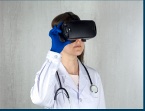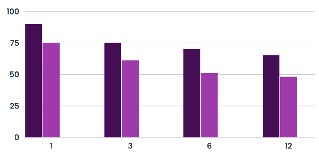Category: Education in Movement Disorders
Objective: This study aims to assess the impact of a novel virtual reality platform on the teaching of clinical neuroanatomy to students in health-related fields. The platform is designed to simulate real-life scenarios, closely mirroring the experiences of healthcare professionals working with neurosurgical patients
Background: The advent of new digital information and communication technologies is revolutionizing classroom dynamics on a daily basis. This transformation necessitates a reevaluation of teaching and learning processes, with a focus on the integration of active methodologies. In the health education sector, technology facilitates the creation of innovative learning tools that can ignite curiosity and foster knowledge acquisition. These tools are particularly valuable for complex subjects like neuroanatomy and its clinical relevance, as they enhance communication and engage health science students more effectively.
Method: The hardware employed for this study supports rapid setup (under one minute), enhancing usability without the need for additional computing resources. The platform offers an immersive experience with 3D models of anatomical structures and real-life neurosurgical case studies, including pathology and radiological examinations. Students are able to interact with and manipulate these virtual models freely. This approach was evaluated using a group of 341 students from health-related courses across three universities. Assessments were conducted immediately following instruction, and again after three and six months, comparing outcomes with and without the use of virtual reality in a neuroanatomy course. Self-assessment questionnaires were also utilized to measure students’ confidence in applying their knowledge in practical settings.
Results: Statistical analysis revealed significant improvements (P<0.04) in student performance across all three assessment periods, particularly in terms of knowledge retention, as indicated by the self-assessment results (p<0.01).
Conclusion: The mixed reality system introduced in this study has proven to be an effective and affordable educational tool. The immersive virtual environment significantly enhances both short- and long-term retention of knowledge, thereby increasing the efficiency of study time. Importantly, this approach places students at the center of their learning journey, empowering them to take an active role in their education.
device used to AR
Assessment in months
References: Kockro, R. A., Amaxopoulou, C., Killeen, T., Wagner, W., Reisch, R., Schwandt, E., & Preiss, G. (2015). Stereoscopic neuroanatomy lectures using a three-dimensional virtual reality environment. Annals of Anatomy – Anatomischer Anzeiger, 201, 91-98. DOI: 10.1016/j.aanat.2015.05.006
To cite this abstract in AMA style:
J. Brainer, A. Fox, P. Brainer, P. Brainer, A. Brainer. Matrix in the Classroom: Augmented Reality’s Role in the Transformation of Neuroanatomy Education [abstract]. Mov Disord. 2024; 39 (suppl 1). https://www.mdsabstracts.org/abstract/matrix-in-the-classroom-augmented-realitys-role-in-the-transformation-of-neuroanatomy-education/. Accessed April 19, 2025.« Back to 2024 International Congress
MDS Abstracts - https://www.mdsabstracts.org/abstract/matrix-in-the-classroom-augmented-realitys-role-in-the-transformation-of-neuroanatomy-education/


